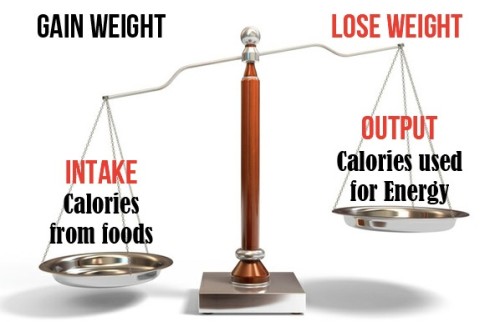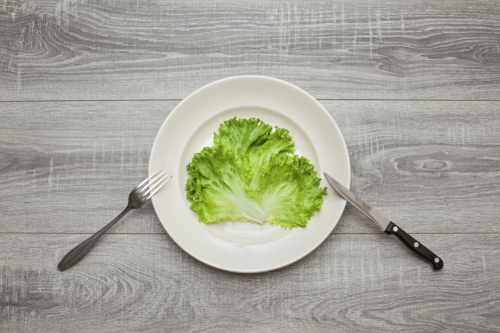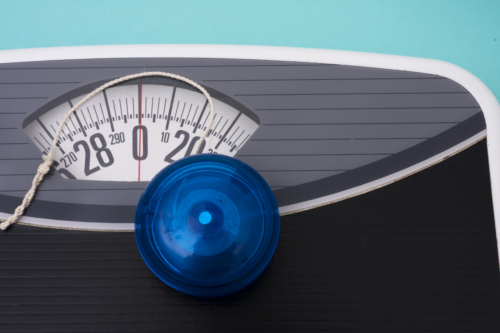by Dr Paul Batman PhD
follow this great series of short articles from Dr Paul. You can use them in your own marketing and social media for your clients just reference them to Dr Paul Batman PhD. You can give your clients well evidenced, credible information to help them on their health and fitness journey and raise your profile in your marketing and social media.
11. How did you expend your energy today?
10 kilogram Weight Gain!!
 Since 1970 the average American has increased their body weight by an additional 10 kilograms.
Since 1970 the average American has increased their body weight by an additional 10 kilograms.
Apparently no category of society has escaped some weight gain particularly over the last 47 years. The easiest way to explain this weight gain is by reporting that we eat more than what we did in 1970 and as a consequence we have become fatter and increased our BMI.
Are we sure that it was caused by eating too much?
One interesting fact that challenges this statement is that Britain has nearly doubled its obesity levels since the 1980s, yet the amount of food that people eat if anything has reportedly decreased. The reason given for this anomaly has been the inaccuracies in energy intakes assessment procedures. If this statement is correct what then could have contributed so significantly to this striking increase in body weight.
In light of this controversy it makes sense to identify what makes up our energy expenditure.
Total Daily Energy Expenditure
Total Daily Energy Expenditure (TDEE) is divided in to three phases.
Basal Metabolic Rate (BMR) is the energy expenditure at rest or the time in sedentary movements. In inactive individuals this could as much as 65% of their total daily energy expenditure (TDEE).
Secondly TEF or the Thermal Effect of Food is the energy expenditure associated with the consumption, digestion and absorption of food. This accounts for approximately 10-15% of the TDEE. This can be affected by the food that we consume. E.g. proteins because of their structure require more energy to breakdown than say carbohydrates.
Lastly, Physical Activity Energy Expenditure (Activity Thermogenesis) is the amount of time spent in performing normal daily tasks, sporting activities and or the time we spend in structured exercise activities.
Dr James Levine was one of the first researchers to further divide Physical Activity Thermogenesis into a N.E.A.T group and an Exercise Thermogenesis group. NEAT stands for “Non Exercise Activity Thermogenesis”. Both categories can account for between 15%-35% of TDEE.
NEAT is the energy expenditure associated with all forms of movement undertaken during the course of the day. Activities include occupational activities, transport to and from work, sitting, standing, walking, shopping, washing the car, sweeping, dancing, etc.
Exercise Thermogenesis is the energy expenditure that occurs as a result of specific fitness training.
N.E.A.T
NEAT appears to be the most significant contributor to TDEE. NEAT is also regarded as the most variable and least predictable component of energy expenditure ranging from 15% in some to over 50% in other very active people. The more activity that we perform at work or during domestic activity the greater our NEAT potential.
The accumulation of low to moderate intensity multiple movements over an extended time period can have a greater impact on energy expenditure than short bursts of intense activity that might be prescribed in a structured fitness session. More information is being reported suggesting that the intensity is not as critical as the volume of movement completed.
In overfeeding studies subjects who have the greatest NEAT still lost the most weight when compared to those subjects who were overfeed and reduced their NEAT.
Generally, with underfeeding or energy restrictive diets, NEAT decreases. NEAT can measured by: TDEE – (BMR + TEF)
Active Lifestyle energy expenditure is now becoming a significant component of the Total Daily Energy Expenditure (TDEE). For example, the longer the standing periods and the greater ambulation speed and duration the greater increase energy expenditure.
While this application may be limited in some work environments it could be used very effectively during transport to and from work, at home while performing domestic duties, school or college attendance and during leisure time to control body weight or manipulated to cause significant weight loss.
If going to the gym or Personal Training sessions is not your thing.. think again and look for ways to increase your NEAT.
For example if I weighed 80 kilograms and spent an hour cleaning the house, washing up, putting the dishes away at a low level of intensity of 3 METS I would still potentially expend 216 Kcals per hour.
If I washed the car, did some gardening, mowed the lawn for an hour at a moderate level of intensity of 6 METS my 80 kilogram body would expend 504 Kcals per hour.
These figures are not to be scoffed at. They are significant increases in Total Daily Energy Expenditure.
So.. throw out all your labour saving devices, park the car in the garage, dismiss the gardener or the housecleaning person and get back into NEAT.
To give some idea of the magnitude we can achieve in increasing energy expenditure the following figures represent people of different body weight working at 3 METS and also comparing to same person working at 6 METS.
How many Kcal can you expect to burn..
Find your body weight (or close to it) and see how much energy you would expend at 3 METs (Light intensity) and 6 METs (moderate intensity) of everyday activity.
At 3 METS (Light Intensity)
60 kg person expends 3.15 Kcals/min = 31.5 Kcal/10 mins OR 189 Kcals/hour
70 kg expends 3.6 Kcals/min = 36 Kcals/10 mins OR 216 Kcals/hour
80 kg expends 4.25 Kcals/min = 42.5 Kcals/10 mins OR 255 Kcals/hour
90 kg expends 4.7 Kcals/min = 47 Kcals/10 mins OR 282 Kcals/hour
100 kg expends 5.25 Kcals/min = 52.5 Kcals/10 mins OR 315 Kcals/hour
110 kg expends 5.75 Kcals/min = 57.5 Kcals/10 mins OR 345 Kcals/hour
120 kg expends 6.3 Kcals/min = 63 Kcals/10 mins OR 378 Kcals/hour AT 6 METS (Moderate Intensity)
60 kg person expends 6.3 Kcal/min = 63 Kcals/10 mins OR 378 Kcals/hour
70 kg expends 7.35 Kcals/min = 73.5 Kcals/10 mins OR 441 Kcals/hour
80 kg expends 8.4 Kcals/min = 84 Kcals/10 mins OR 504 Kcals/hour
90 kg expends 9.45 Kcals/min = 94.5 Kcals/10 mins OR 567 Kcals/hour
100 kg expends 10.5 Kcals/min = 105 Kcals/10 mins OR 603 Kcals/hour
110 kg expends 11.5 Kcals/min = 115 Kcals/10 mins OR 690 Kcals/hour
120 kg expends 12.6 Kcals/min = 126 Kcals/10 mins OR 756 Kcals/hour
The choice is now yours…
12. What happens if I go away on holidays and I don’t train?
When people start a cardiovascular fitness program they are sometimes under the illusion that they will get fit quick and once they have improved their CV fitness level they can stop and go back their previous sedentary habits.

They don’t realise that it takes time and commitment to get CV fit and then a longer time to maintain their improved fitness level.
The sad reality is that once they stop training, their CV fitness can be lost at a faster rate than it took to gain.
Cardiovascular fitness causes major changes in the heart, blood, blood vessels, organs and the skeletal muscle. The greater the changes in cardiovascular fitness the fitter we become. In other words, our maximum aerobic fitness (VO2max) will increase proportionally to these major changes.
The interesting point is that the fitter people who have a higher VO2 max (>55 ml.kg.min-1) and have been training for some years have more to lose than those who are regarded as moderately fit (<55 ml.kg.min-1).
So what happens to our fitter friends if they decided to go on a four weeks holiday and choose to relax, eat and drink and generally laze around without any exercise?
After three weeks of sun, surf and lazing around they can potentially lose 7- 11% of their maximum aerobic fitness (VO2max). This is a rapid decline in a relatively short period of time. After three weeks, the decline will not be as rapid but will still decline eventually slowing down.
In our moderately trained group the four weeks holiday will only cause a small decline in VO2max.
Apparently the difference between the two groups is due to the greater heart action in the trained group than the moderately trained group.
The first training response lost in a detraining scenario is a reduction in the heart’s ability to pump blood per beat (stroke volume) ultimately causing a reduction in the amount of blood the heart can pump per minute (cardiac output). With less blood being pumped, less oxygen is carried to the muscles causing a decline in the muscle’s ability to generate aerobic energy.
In other words, the trained group are more susceptible to a loss in heart function that the moderately trained group have yet to gain. We can see this when the trained group take their basal heart rate in the morning when compared to the moderately trained group.
In a trained group the resting heart rate will start to increase after the first 7-10 days of rest while the moderately trained group will generally present with a similar resting heart rate.
The increase in resting heart rate indicates that the heart’s ability to pump out blood per beat is decreasing more rapidly in our trained friends.
After the changes in heart action other changes occur at a slower rate for both groups. For example, the blood flow to the muscle remains the same until approximately 12 weeks of rest where the moderately trained will start to lose more than the trained group. The activity of enzymes that speed up many of the chemical reactions start to decrease at about three weeks making it hard for the powerhouse of the cell to make aerobic energy.
So what are our options if we are going on holidays and want to maintain our cardiovascular fitness?
There is always the option of training normally while on holidays.
Train at least twice per week using a HITT training protocol. You can use any mode of training (bike, stepper, treadmill, etc.) for approximately 30minutes.
Pay attention to what is eaten to avoid any weight gain. Weight gain will cause a decrease in relative VO2max due the increase in body weight.
Train very hard every day for the 5–7 days before holidays without significant recovery. This places the body into an overreaching state where the recovery will take at least 7-10 days and then train with HIIT once per week for the next two weeks.
So when we are resting on the beach, our body is still be recovering from our overreached state rather than being fully recovered ready to start taking our hard earned cardiovascular responses away from us.
We should make the most of our break and look forward to regaining our lost CV fitness when we get back. The reversal of regaining our CV fitness is generally faster than when we initially started on our fitness journey.
If we are moderately trained, other than watching weight gain there is little to be concerned about as the low to moderate intensity movements of swimming, strolling, playing golf, surfing, paddling will all contribute to maintaining our CV fitness.
Sadly this might not be the case for our well-trained friends.
13. What happens when energy restricted diets are crossed with high intensity exercise?
If we are on a healthy eating plan based on the current macronutrient portioning of food per day we are probably eating 2,000- 2,200 Kcal if we are female and approximately 2,600-2,800 Kcal if we are male.
The food pyramid emphasises that our break up of K calories should be 50% carbohydrate, 25% fats and 25% protein.
As an 80 kilogram male, I should be eating approximately 2,700 K calories divided up into approximately 675 Kcal of protein and fat and 1,350 Kcal of carbohydrate per day. Being active, this prescription should keep me weight stable.
Caloric Restricted Weight Loss

If I was looking for weight loss and was prescribed a caloric restricted diet of 1,200 Kcal, my division of macronutrients would be 600 Kcal of carbohydrate, 300 Kcal of fat and protein.
The 600 Kcals of carbohydrate prescribed is enough to maintain my normal bodily functions at rest but is just barely enough to feed my brain as well if I have previously been on a high carbohydratediet.
My Liver is pumping hard making any additional required glucose via converting some protein to glucose (gluconeogenesis). The protein conversion is only good for approximately an additional 200 Kcal so all in all I have approximately 800 Kcal of carbohydrate available for my 24 hours cycle.
So at this point all is good and I am coping well.
My background in intensity had always been to “go hard or go home”. My motto used to be “just do it…. and then spew it!
As I have aged I have reviewed my old philosophy and realised the importance of multiple movement experiences, performed at low to moderate intensity for as much of the day as possible.
What if I went back to my old ways and incorporated some high intensity exercise as part of my weight loss intervention in combination with my reduced 1,200 Kcals diet?
Off and Running…

I am now on the treadmill running at 10 kilometres per hour. At this pace approximately 60% of my fuel will come from carbohydrates. Within the hour on the treadmill running at 10 kph I have used approximately 300 Kcals of carbohydrates.
In the 24 hours that incorporated this run I had 600 Kcals of carbohydrate available for all the body systems to function at rest as well as an additional 200 Kcals that can be converted from protein to carbohydrates, so in total 800 Kcals of carbohydrate.
My brain requires approximately 30% of my available carbohydrates, which translates into approximately 240 Kcals of energy (30% of 800 K calories).
If I expend 300 Kcals of carbohydrates from my run, 600 Kcals for the cells of the body (brain included) to perform their daily functions, I will have exceeded my total concentration of carbohydrates (600 + 200 = 800 Kcal) for the day by 100 Kcals.
All of a sudden…… “Houston we have a problem”.
If I run on the treadmill 3 days per week with a recovery day between each run, my body will adjust by storing more glycogen that can be used on the run days and I will be able to cope with the reduced carbohydrates available.
But what if I decided to run at this pace for 5 to 7 days of the week. After a week of this combination I could begin to feel tired, physically fatigue or as it has been described… “hit the wall”.
“Hitting the wall” is not restricted to just those who run marathons.
People on severe caloric restricted eating plans combined with high intensity exercise can also experience a similar feeling. I am now in the zone of glycogen depletion.
This can only get worse unless I take some time to recover between training sessions or eat more dietary carbohydrate, energy bars or energy drinks to quickly increase my blood sugar levels and thereby increase my Kcal….. but this would be against the philosophy of our weight loss program.
The most obvious alternatives would be to:
Reduce the intensity of the training dose and expend the same number of Kcal over a longer period of time tapping into my fat stores and preserving the limited carbohydrates stores for other functions.
Alternate high intensity days (glycogen dependent days) with much lower intensity days (fat dependent days).
Eat more carbohydrates with the intention of exercising at a high intensity every day.
Limit high intensity days to three times per week with at least a 24 hours recovery between training sessions and on the other days perform 10,000 steps or additional movement in the home, at work, active transport at an intensity between 2-6 METS (low to moderate).
What about limiting my carbohydrate intake?
A recent alternative recommendation is to limit our carbohydrate intake to 50 grams per day for two weeks, which will teach our body to utilise more of our fat stores.
This method would require a rethink of the proportions of our macronutrients.
What if we changed our 1200 Kcal diet to include 30% protein, 20% carbohydrates and 50% of good fat?
The theory behind this is that after a two weeks period of no intense exercise our body will begin to convert ketones from our fatty acids for energy to within an acceptable limit, which could potentially improve our fat loss.
Ketones could potentially now provide approximately 50% of the brain’s fuel taking the pressure of it being fully carbohydrate dependent.
Additionally, the skeletal muscles would be better adapted to metabolise fatty acids sparing the additional glycogen and protein that was previously used a fuel. The accompanying exercise prescription would involve low to moderate intensity activities of daily living, of which walking would be the cornerstone.
Remember we have potentially 80,000 Kcal of energy available for fuel from fat compared to 2,000 Kcal of carbohydrate…. so why not try and use it.
This theory tips the carbohydrate loading theory of performance on its head!
Think about it as it could have merit in everything we do from weight loss, improvements in health and athletic performance.
Arthur C Clarke once said “ I don’t pretend to have all the answers. But the questions are certainly worth thinking about.
14.What would it be like to stand non-stop for a month?
Newspaper journalist Dan Kois did just that..

After finding the problems and perils of sitting for up to 11 hours a day as a journalist, Dan decided that he would stand for up to 17 hours a day for 30 days and record the results as he progressed through the month. This would form the basis for an article for his newspaper.
The only time he was permitted to sit was while driving the car and when he had to go to the bathroom and would lie down to sleep. At all other times he was to stand irrespective of the occasion. He stood eating his meals, watching TV, reading, at work, on the train, at the movie theatre, at restaurants, during office meetings and reading stories to children.
Dan had to convert his workstation to a standing desk and used a fitness tracker to plot his progress. For most of the time he only sat for approximately 30-45 minutes per day depending on whether he took the train or drove to work.
Week 1
In the first week Dan reported feeling exhausted with aching legs particularly his calves. At first he couldn’t work at home as he was just too tired and had too many aches and pain in his calves, hips and ankles.
Week 2
In the second week Dan was still feeling sore and found ways to stand more economically without the additional discomfort. He started to stand with one foot on a raised platform to take some of the stress off his back and began to stretch more both of which made it easier for him.
Week 3
By the third week Dan was almost back to normal physically, no pain in muscles and joints. One of the problems he experienced was the isolation he felt in the social company of others. While others were sitting and relaxing, Dan was a man with a purpose.
It demonstrates the need to have a movement friendly environment and a support system of people who share a similar belief.
Week 4
After 30 days of standing up to 17 hours per day Dan reflected on the experience.
He found it an ordeal for the first couple of weeks, although he felt that it was still a great success.
Over the 30 days he had lost 3 kilograms of body weight, gained muscle in his legs, improved his fitness, cut time wasting to a minimum, was much more productive in his editing and writing and walked a staggering 160 kilometres extra without even trying!
15. Are you a “Yo-Yo” dieter?

At any one time most people we know are either thinking about losing weight, are currently on a diet or have just broken their diet and putting the weight back on.
Two thirds of the US population is now classified as overweight or obese. Of those people who are obese, 65% of men and 68% of women are trying to lose weight.
There is at any one time approximately 55% of women and 39% of men in the general population always trying to lose weight.
The reality is the majority of those people trying to lose weight today will sadly regain that weight within a short period of time. They might go though repeated weight loss cycles where they will lose weight and over time will put that weight back on again.
It has been reported that 18-34% men and 20-55% of women are currently weight cycling, which would indicate that long-term weight loss is rare.
Weight Cycling Defined
Weight cycling is defined as an intentional weight loss of 4.5 kilograms (approximately 10lbs) followed by a regain of this weight at least three times.
In Finland 7% of men and 10% of women are serial weight cyclers, while 11% of men and 19% of women are mild weight cyclers. This indicates that 18% of all men and 30% of women have experienced some degree of weight cycling. It is likely that these numbers would be greater in the some of the more obese nations.
It’s not just the overweight or obese that weight cycle. In Denmark 25% of underweight and 38% of normal weight people reported at least one weight loss attempt in their lives.
The largest group where weight cycling is more prevalent is in the younger age groups particularly young women, mainly due to the increase in overweight or obesity in children and adolescents as well as the unhealthy obsession on thinness.
In a survey of 17,000 university students in 21 European countries (BMI 20kg/m2 for females and 22. Kg/m2 for males) 44% of women and 17% of men were trying to lose weight.
In a study of 46,000 women followed for 4 years, 78% intentionally lost weight (2.5-4.5kgs) at least once, 41% lost weight twice, while 21% lost at least 4.5 kg three times within the four year period.
The probability of weight regains increases most dramatically in the first week of relapse following the weight loss. This is possibly due to caloric restricted diets causing an increased drive to eat. The increased drive to eat combined with a reduced ability to utilise fats encourages rapid weight gain.
Another study reported that 55% of overweight women who lost 10% of their body weight regained the weight over a 4 years period. In support of weight regain, 95% of women and 93% of men who lost on average 5% of their bodyweight were reported to have regained their weight within 9 years.
Collectively with all the studies initial weight loss is possible but the maintenance of the weight loss appears very unlikely and extremely difficult.
The type of diet that most subjects were predominately treated with included a reduced caloric eating plan based on the healthy food pyramid (high carbohydrate diet, low fat and moderate protein).
Who is most at risk?
The most significant weight regain from weight cycling has been found in obese women, young women and middle aged women.
It is also important to realise that a greater weight gain is associated with an increase in risk factors for hypertension, diabetes, cardiovascular disease and some types of cancer.
It is possible that weight cycling can change body composition by reducing lean body mass and increasing total body fat and visceral fat.
In weight cycling, women have presented with a greater amount of total body fat and an increase in waist to hip circumference.
In particular, obese women who have weight cycled have an increased distribution of fat in the abdominal region while in non-obese women a greater waist to hip ratio was reported.
In any case it appears an increase in weight regain can occur with repeated weigh cycling.
If weight loss programs are not sustainable for the long term and there are no behavioural strategies imbedded then the weight loss journey can so easily be sabotaged.
Another question that arises is whether weight cycling can be more detrimental by adding to the current disease risk than simply remaining obese or overweight…….
The emphasis should be on…
Eating real food, challenging the current partitioning of fats, carbs and proteins in the current healthy food pyramid and the importance of continual physical activity throughout the day in any weight loss program.
Quick weight loss fixes are generally promoted, which is very difficult to maintain, and can lead to the significant problems of weight cycling and possibly an increased weight regain.
Once the weight is lost the real test comes in keeping it off
